-
Genealogy & Names
-
Tourist Information
-
Culture & Reference
|
Oct 2020 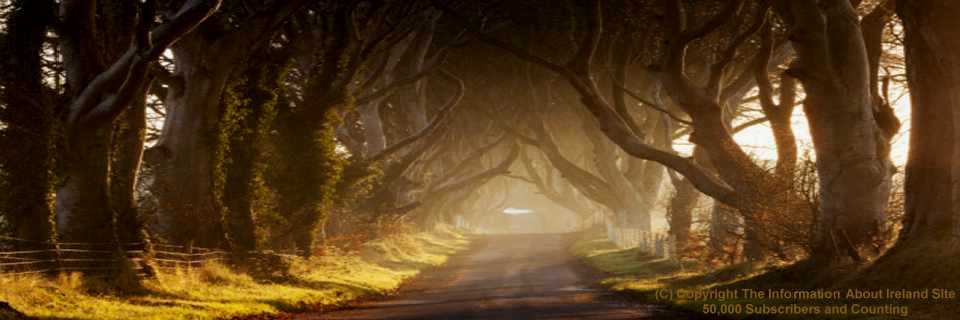
Irish Autumn Scene from Free Photos Of Ireland |

|
|

| Popular Articles from Recent Newsletters: |


|
Despite the Irish Government introducing a much-heralded 'Roadmap for Living with Covid-19', the country has now bypassed the various stages of that Roadmap (Level 3, Level 4), and plunged straight into Level 5 (the severest level), and again closed many businesses and re-introduced travel restrictions. Many of these businesses will never re-open. 
There was much fanfare about the Irish 'Roadmap' and it was cited as an example to follow by several other European countries. However a political spat between the Health advisory body (NPHET) that makes recommendations around Covid-19 and the Irish Government was eventually won by NPHET who judged that the recently introduced Level 3 restrictions were insufficient to deal with the rising number of Covid-19 cases. Despite warning that any new restrictions that were introduced would have to be given some time (at least a number of weeks) to have any effect, NPHET abandoned their own advice and insisted that Level 5 restrictions be implemented immediately, without waiting for any positive results that Level 3 might bring. Several weeks later the number of Covid-19 cases have started to reduce. Citizens are required to stay within a 5km radius of their home, except for work or 'essential' purposes. Visitors to homes have been greatly reduced and Pubs and Restaurants have been closed nationwide (although some can offer take-away services). The debate will continue as to whether this was an over-reaction by NPHET and the Government as Level 3 restrictions may have worked without closing large parts of the Irish economy again. The extent of the power that these unelected health officials have over the Irish population is also being questioned. It is noteworthy also that those who are making these decisions are all full-time public servants who have no risk of any weekly pay reductions and will be secure in their public service pensions. In short, any decisions they make will have little economic effect on their own income. The Bill for Covid-19 is yet to be tallied with currently over 300,000 Irish workers receiving a weekly Pandemic Payment. The payment has been extended until April 2021. The final total bill is expected to be between 20 and 30 Billion Euro for 2020 alone. For context, the disastrous economic crash of 2008-2009 and the subsequent bank bailouts in Ireland resulted in 64 Billion euro of public money being given to the Irish banks (via EU/ICB/EMF loans that were offered on condition that French and German bond-holders be repaid their gambling debts). Depending on when/if the Covid-19 problem is solved then the final tally over 2020, 2021 and beyond could realistically be several multiples of that amount if repeated lockdowns are implemented and businesses destroyed. Couple that with the looming mental health issues, the inevitable increase in suicides, the detrimental effects on children and it is easy to see that the Irish Government reaction to Covid-19 will inevitably have terrible consequences long after Covid-19 loses its influence on society, if in fact that day ever comes. It is easy to forget that Ireland was once thronged with tourists anxious to visit heritage sites such as Newgrange or Clonmacnoise, or to soak up the atmosphere of cities such as Galway, Dublin and Cork. 
Against this backdrop there has been some good news for the Irish tourist industry with the announcement that the 'Epic Museum' in Dublin has been named 'Europe's Leading Tourist Attraction' in the World Travel Awards, beating off competition from the Eiffel Tower in Paris, the Colosseum in Rome and the Acropolis in Athens. The Jameson Distillery on Dublin's Bow Street was also named 'Europe's Leading Distillery Tour' for the third year running. |

|
||||

|
The huge array of food choices available to us today in the supermarkets, got me thinking about the food that we had growing up in old Ireland and in particular our humble school lunches. Banana sandwiches are my most vivid school lunch memory. Our mother would put mashed bananas in between two slices of thickly buttered bread and by lunch time the banana and the butter would be oozing out the side of the paper bag.  If the cloak room door was left open that distinct aroma of ripe bananas would spill out into our classroom. I have never forgotten that smell of soft, rotten bananas and since I was only one of many students who had banana sandwiches the smell in the air was quite heavy.
If the cloak room door was left open that distinct aroma of ripe bananas would spill out into our classroom. I have never forgotten that smell of soft, rotten bananas and since I was only one of many students who had banana sandwiches the smell in the air was quite heavy.
Our mother had to prepare a lot of lunches for our large family and quite frankly I don't know how she did it. The main obstacle after making the sandwich was finding a bag to put it in, since we did not have the luxury of Tupperware at our house. Most days my lunch was put into a sugar bag and many a morning Mum emptied a full bag of sugar out into a bowl just to be able to use the bag, as she had nothing else. She always cautioned us to bring the bags home. Those bags were like gold dust to Mum and they were used over and over, needless to say that by the end of the week the stained, crumpled 'siucra-bag' was almost unrecognizable. My sister Liz said she remembered having tomato sandwiches in a sugar bag for lunch and sometimes for a special treat Mum would put a Kimberly biscuit sitting on top of the bread. By lunch time it was a very messy affair indeed! The tomatoes were wet and soggy and full of sugar and the Kimberly biscuit was well embedded into the top slice of the bread. She would gobble it up regardless as there was no other choice! Hunger is the best sauce they say. I asked my cousin Mike Kelly what he remembered eating at school and he said his most vivid memory was of bread and butter and blackberry jam. He never forgot the day when he was in second class and a wasp flew down from the old convent rooftop and stung him on his jam covered lip. Ouch! The pain of that! How those mean wasps waited patiently for us unsuspecting children! I asked him what did the teacher do for his painful, swollen lip and he replied 'I never told her - we didn't run to the teachers back then when we had problems! My four older brothers also remembered having lots of blackberry-jam sandwiches too. They have fond memories of picking blackberries in the fields every day after school for Mum. Our Dad would boil the jam on the old range at night and that delicious aroma of the sweet jam filling the cottage has stayed with us all to this day. There was always plenty of jam around the kitchen for our lunches in the summer and the autumn. But once Halloween passed there were no more blackberries picked as the witches supposedly put an evil spell on them and they were not fit for eating. That's what we were told anyway. Chicken and Ham Paste from the little jar and sandwich spread were a rare treat in our house and were reserved for our four older brothers. My husband said he remembered having Bovril sandwiches for school and he loved them. I have no recollection of having chocolate bars or crisps for lunch when I was at school. When it came to what we had to drink we had two choices, water from the school fountain or milk. Our mother's problem was always one of logistics; what was she to put the milk in? We had no plastic bottles or containers but thankfully our Dad loved a drop of Jameson's or Paddy Powers and he used to buy the little glass bottles. Our clever mother saved the empty whiskey bottles and used them for our milk - necessity being the mother of invention. We would grab our sugar bag and our little whiskey-bottle full of milk every morning and off we would go. 
There were six girls and five boys in the family and we girls remember well our youngest sister Deirdre's first day of school. Mum had cautioned us to meet up with her in the school yard at lunch time to check up on her. Deirdre nervously sat down on the old bench beside us for her lunch. She must have been very thirsty as she quickly undid the lid of the little whiskey bottle and raised it to her mouth. This was her first time ever drinking milk from a whiskey bottle and she tried to gulp the milk down too fast. Her little tongue got stuck down in the narrow neck of the bottle; the milk created a tight seal around it. She couldn't get the bottle off her tongue and began to panic; her face turned puce as the bottle kept hitting off her teeth as the tears of panic flowed. It was quite scary for her. Our eldest sister Pauline immediately jumped into action. She stood Deirdre up on top of the bench, ordered me and Liz to hold her back against the wall and then she grabbed the bottle and pulled it off Deirdre's tongue with all her might! We held her pinned against the wall by the shoulders until the bottle released itself and with a loud pop all the milk sprayed everywhere. Deirdre cried up a storm from the terror of it all and from losing all her milk into the bargain. What a terrible memory of her first day at school! My cousin Mike told me that his family used empty glass medicine bottles for their milk and they had to bring them home every day. We recycled well before it became fashionable! Times sure have changed in the school lunch department but we all look back and have a good laugh together at our old school lunch-memories. ~~~ Marie O'Byrne is the Irish author of 'Irish Rose' and other titles. You can contact her at marieobyrne@gmail.com |


find out more |

|
note: Sadbh is pronounce 'sigh-ve'. Fionn is pronounced 'fyun'. Oisín is pronounced 'ush-een'. Sadhbh was the mother of Oisín, famed for his journey to Tir na nÓg, the land of eternal youth. As a young woman Sadhbh had refused the advances of the Druid Fer Doirich (or 'Fear Doirche', meaning 'dark man') who was Druid to the Tuatha Dé Danann. Outraged by her refusal the Druid cast her into the form of a young deer, a doe, in which form she remained for more than three years. 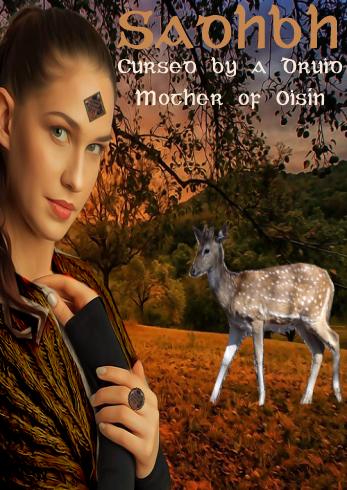
Taking pity on her, one of the men of the Dark Druid told her that if she entered a castle or home of the Fianna then the spell of the Druid would be broken. Sadhbh heeded his advice and escaped, eventually arriving at Almhuin (the Hill of Almu), the home of no less a legendary figure than Fionn MaCumhaill. When Fionn arrived home he observed the young doe and expected his hounds, Bran and Sceolan, to attack it. But they did not. For they too were human creatures that had been transformed into animal form and instead they approached the deer, protecting it. Suddenly Sadhbh was transformed back into the beautiful woman she once was. Instantly Fionn fell in love and the couple were soon united in marriage. There was further joy for Fionn when his wife informed him that she was with child, but alas it is at this point that the Dark Druid once again cursed her life. For he had never stopped searching for Sadhbh and when he learned of her location he awaited his chance. It was not long before Fionn had occasion to leave his home, as, since he was a man of the Fianna, he was expected to lead his warriors in battle. As soon as he left his dún (fort or castle) the Druid cast a false image of Fionn outside it in the hope that he could draw Sadhbh outside where his powers would again hold sway. His trickery worked. Thinking she was greeting her husband Sadhbh ran from the dún only to be again transformed instantly by Fer Doirich back into the form of a young deer once more. Fionn returned to find his wife missing. He was distraught and searched the lands of Ireland for more than seven years. Nearing despair he eventually found a young boy wandering on the stunning mountain, Benbulbin, and who had been living wild in the forests and mountains. His hounds, Bran and Sceolan, quickly approached and protected the boy. Realizing that he had seen this scene before Fionn looked deep into the young face of this wild human creature and recognized the features of his missing wife. Amazingly he had now found his son that had somehow been born in human form. He named him Oisín, who went on to become one of the greatest of all of the Fianna. Sadhbh was never found, with legend having it that she still to this very day wanders the forests of Ireland, in the form that the Dark Druid of the Tuatha Dé Danann commanded. Seemingly cursed for all time. Alternative forms of the name Sadhbh: Sive, Sadb, Saibh, Saeve, Sadbh, Saba. The town Cahersiveen in County Kerry roughly translates as 'The Fortress of Little Sadhbh' Read more amazing stories of Irish legends and mythology. |

|
From the earliest times Humankind has needed something to believe in, turning instinctively to those elements in their world that seemed more durable than life itself. Nature in its cycles brought constant change but the stones were always there, so they revered those that appeared to be imbued with mystical qualities – by virtue of shape, size or location. They were incorporated into the sounds that became a burgeoning language, giving us words such as touchstone, lodestone, runestone. From there it was a simple step to invest them with mystical qualities where tribal custom, royalty and even religion were determined by a stone's presence.  The stone of Arthurian legend and the more immediate reality of Islamic Mecca's Black Stone are two obvious examples. But it was a long-established practice in both Gothic and Celtic races to place their kings upon a huge local stone, to be there installed with majesty and sanctity. On such a stone – the Morasten – were inaugurated the Kings of Sweden; so too the Dukes of Carinthia at Zollfell. Seven stone seats for the Emperor and his Electors mark the spot where the river Lahn joins the Rhine at Lahnstein. On such a regal rock the King of Hungary appears, sword in hand, at Pesht. Similar stones supported decrees issued to usher in the republican states of Torcello, Venice and Verona. In early Britain the Lord of the Isles was so enthroned.
The stone of Arthurian legend and the more immediate reality of Islamic Mecca's Black Stone are two obvious examples. But it was a long-established practice in both Gothic and Celtic races to place their kings upon a huge local stone, to be there installed with majesty and sanctity. On such a stone – the Morasten – were inaugurated the Kings of Sweden; so too the Dukes of Carinthia at Zollfell. Seven stone seats for the Emperor and his Electors mark the spot where the river Lahn joins the Rhine at Lahnstein. On such a regal rock the King of Hungary appears, sword in hand, at Pesht. Similar stones supported decrees issued to usher in the republican states of Torcello, Venice and Verona. In early Britain the Lord of the Isles was so enthroned.
But perhaps the most famous – and oldest – stone links the kings of Ireland, England and Scotland in such an inextricable way that it can truly be called 'The Stone of Destiny'. It currently resides in the Crown Room at Edinburgh Castle. A roughly rectangular sandstone block measuring some 66 cms by 41 cms by 28 cms and weighing in at 152 kilograms, it has two iron rings, one fixed at either end for transporting and a Latin cross incised off centre. Nothing amazing to commend it to a casual viewer but to some Scottish patriots it seems more precious than life itself. The Encyclopaedia Brittanica refers to it as Lia-fail or Stone of Destiny. It has been said that for centuries it was used in celebrating an Irish legend as being the stone on which the biblical patriarch Jacob rested his head as he slept when he dreamt of the Heavenly Ladder – hence Jacob’s Ladder. '...Inishfail...' the account goes on, 'was the Island of Fail, the island whose monarchs were crowned at Tara on the sacred inauguration stone.' The stones' pedigree is well documented. During the period covering the north-western migration of the early Irish (the Tuatha de Danann) up through Europe from the Mediterranean, we find recorded the passage to Ireland in 576 BC of an elderly, white-haired scholar named Jeremiah. He had with him his constant companion, Simon Brech (sometimes Brach), son of Milo the Scot. The other travellers in the party were of royal blood; no less a personage than Erimon, future King of Ireland, his Hebrew princess Tea-Tephi and their 12-years-old son. The couple had met and married in Jerusalem but had been forced to flee when the Assyrians laid siege and then sacked the city. No less remarkable were some of the items of cargo that Jeremiah had on board, including a harp, an ark (chest) ...and a wonderful stone called Lia-fail or Stone of Destiny. As the Hebrew language scans from right to left it is interesting to note that Lia-fail reads the same both ways. When Erimon finally succeeded to the Irish throne – the first to be so honored above the Lia-fail at Tara – the Stone of Destiny went into Irish legend. As The Great Fail it became a talisman of the Tuatha de Danann, imbued with the power to shriek only when the rightful King of Ireland sat upon it. If a pretender then it groaned aloud 'as with thunder'. But the stone was destined to influence the fortunes of more than one nation and leave the Hill of Tara (or Torah, according to Judaic texts). Fergus, the founder of the Scottish monarchy, had long coveted its mysterious properties and eventually succeeded in carrying it away, across the Celtic Sea to Dunstaffnage. From there it went on to become the Stone of Scone Abbey at Perth, which many regarded as Scotland’s first capital rather than Edinburgh. The Scots retained it over several reigns of their own kings, using it as their coronation stone until 1296, when Edward the First captured it in his turn and took it to Westminster Abbey. There it remained, except for one relatively brief period when Scottish Nationalists stole it on the Christmas morning of 1950, until its return in 1996. All but two of the English monarchs have been crowned or anointed while sitting upon it. A stone of destiny indeed, and if there is any substance in the latest scientific claims that even stone has the ability to absorb and subsequently release its ambient data then the Lia-fail must sure qualify as a suitable case for treatment! Accept that and you simply have to ask the question: Given its alleged mystical qualities and its historical position at the very seat of power for so long, just how much has this most potent of Irish relics influenced the course of British history? Was the journey worth it, and perhaps more importantly... will Edinburgh Castle yet prove to be its final resting place? |

|
The winner was: mandakinsella@aol.com who will receive the following: A Single Family Crest Print (usually US$24.99) Send us an email to claim your print, and well done! Remember that all subscribers to this newsletter are automatically entered into the competition every time. I hope that you have enjoyed this issue! 
by Michael Green, Editor, The Information about Ireland Site. https://www.ireland-information.com Contact us (C) Copyright - The Information about Ireland Site, 2019. 17 Páirc Ghrainbhil, Carraig Dubh, Contae Baile átha Cliath, Ireland Tel: 353 1 2893860 |

|
MARVELOUS GIFTS FOR ANY OCCASION FREE DELIVERY TO YOUR DOOR 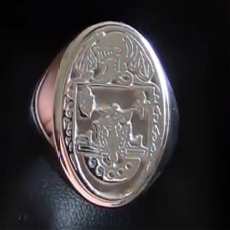
BIG REDUCTIONS! Stunning Family Crest Signet and Seal Rings 
DISCOUNTED FOR A LIMITED TIME Elegant Cufflinks 
Incredible Family Crest Plaques Made in Ireland 
Superior Framed Family Crest Parchments 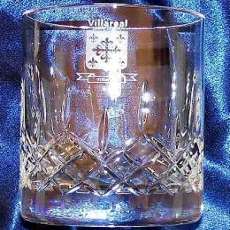
Gorgeous Glistening Galway Crystal 'Your-Name' Old Irish Sign NEW DESIGNS! 
From US$34.99 - Free Delivery 
New Designs available on our Coffee Mugs 
Personalized Licence Plate 
Personalized First Name Plaque. Great for Kids! 
'Your-Name' Polo & Tee Shirts 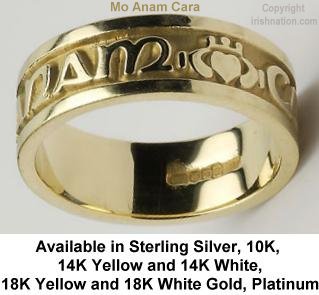
From US$69 Delivered BIG REDUCTIONS! Stunning Engraved Rings from Ireland with Irish Language Phrases. Mo Anam Cara: My Soul Mate Gra Dilseacht Cairdeas: Love, Loyalty, Friendship Gra Go Deo: Love Forever Gra Geal Mo Chroi: Bright Love of my Heart SEE MORE GREAT OFFERS AND DISCOUNTS AT: IRISHNATION.COM FREE DELIVERY FOR A LIMITED TIME! |
